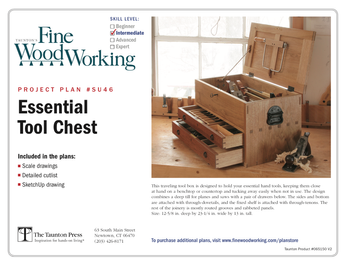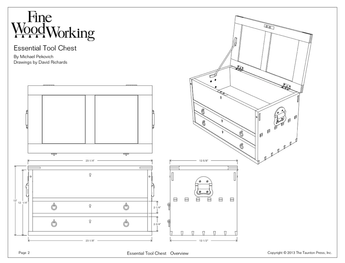Hello, I’ve been triing to edge joint on the router table without much success. All I get is an ultra smooth edge and a slightly crowned board. I’m using a shop made table,Rousseau router plate,Rockler fence and shim(s)on outfeed side, a PC 690 router w/1/2 ” straight bit.I’ve tried 1/2 and 3/4 oak and pine stock, different feed rates, with and without featherboards. Always the same crown in the middle of the board. Am I missing something? Thanx for any input.
Discussion Forum
Get It All!
UNLIMITED Membership is like taking a master class in woodworking for less than $10 a month.
Start Your Free TrialCategories
Discussion Forum
Digital Plans Library
Member exclusive! – Plans for everyone – from beginners to experts – right at your fingertips.
Highlights
-
Shape Your Skills
when you sign up for our emails
This site is protected by reCAPTCHA and the Google Privacy Policy and Terms of Service apply. -
 Shop Talk Live Podcast
Shop Talk Live Podcast -
 Our favorite articles and videos
Our favorite articles and videos -
E-Learning Courses from Fine Woodworking
-
-
 Fine Woodworking New England Event
Fine Woodworking New England Event -












Replies
How long are the pieces and how long are your fences? Do you know how and when to transfer pressure to the outfeed side only? Are you straightening or just putting on a clean edge? How much of a cut are you taking?
As with jointers, the router table needs to have the outfeed fence just a hair shy of even with the cutting plane. Once you have 1/4 to 1/3 of the board past the cutter, you have to shift your hands to the outfeed side only. Continuing to apply pressure on the infeed side will result in a crowned board. The fences need to be coplanar and the outfeed side needs to be right on for the cut.
I'm not sure where you are using feather boards other than as hold downs. If they are on edge, they should only be on the outfeed side and not directly across from the bit.
To edge something like 3/4" red oak, you can't take much of a cut. This makes set up, speed and feed more critical. Depending on what you are trying to do, there may be other ways.
you may need a split fence - or you're applying too much pressure while feeding through
SA
As with a conventional jointer, the alignment of the out feed table, in your case it would be the out feed fence, to the cutter is critical. Moving the outfeed fence in or out a few hundredths of an inch will greatly affect whether you get a straight or slightly curved cut.
In addition to what the others have said, I will note that to remove a crown, you have to remove more material in the middle area - a full length cut will only lead to a narrower board. Try taking a partial cut starting a few inches in and ending a few inches before the end. Then take a full pass. Moving the outfeed fence back a little might help too.
There is some technique sensitivity and your fence has to be set on the money. If stuff deflects (unlike the castings of a jointer) you'll lose your straight line.
Some details here: http://patwarner.com/routertable_jointing.html
I* agree with Pat. It takes good technique, and likely some specialized tweaking, to get light-tight joints on a cast iron jointer, it's going to take a lot of finesse on a router table.
I have some luck with short pieces on the RT, but straight edge and router always works.
As somebody who recently tried this for the first time I can offer some hints:
1. As somebody mentioned above, you need a split fence. If yours is a one piece modify it by screwing 2 pieces of plywood to it. Shim the outfeed one with thin card. This sets your depth of cut. Adjust the fence so that the outfeed is in line with the cutter. Err slightly so that the work will not bump up against the fence when it first exits the cutter.
2. You cannot just present the work to the router and expect the technique to work. Examine the face you are jointing and work out where you need to remove wood. Make your initial cuts to remove wood only from those areas. Keep examining the piece. When it looks good then start with the full length cuts.
3. Ensure good support for the work throughout the cut. I use roller stands on either side of the table if necessary (takes some time to get them dead-on).
4. Make sure that the wood slides easily on the table. Wax it if necessary.
I thank you all for your comments and feedbak. To back-up a bit(no pun).... I'm already using a split fence,outfeed side shims;.020 or .040,bit alighned wih outfeed side, straight boards,hold downs and a hold in left of the bit.The hand pressure and /or fence deflection may be my cuplrits.
This forum post is now archived. Commenting has been disabled